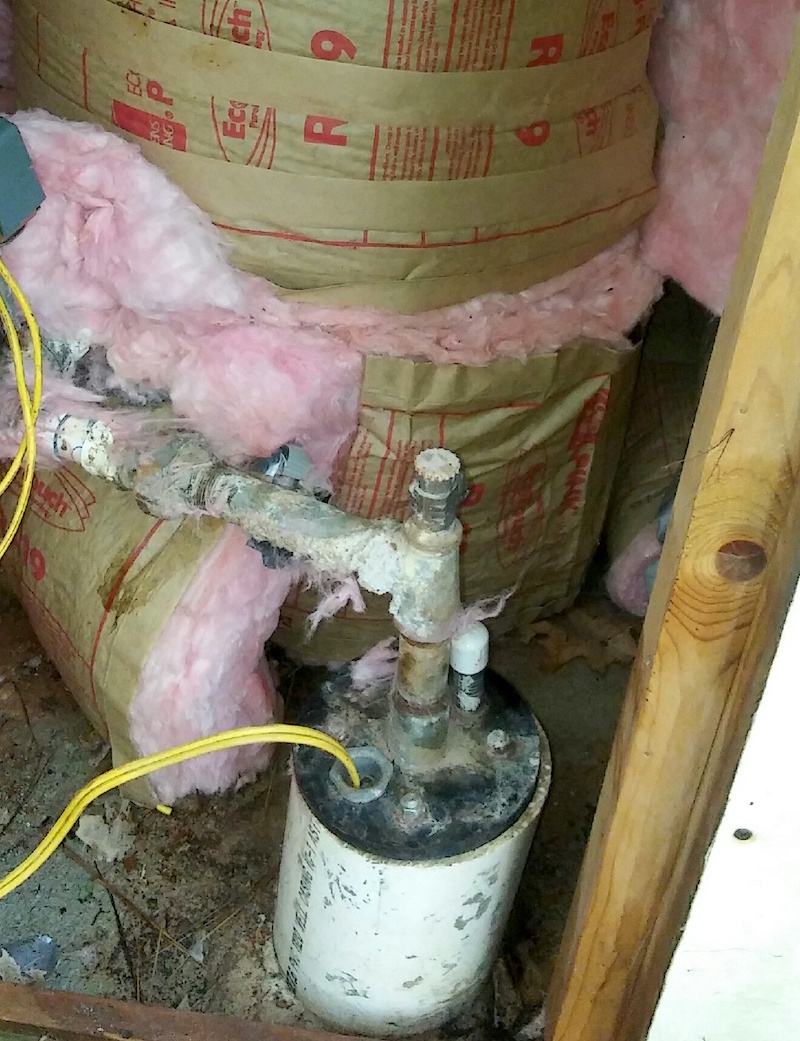With hundreds of yards flooded in the wake of Hurricane Irma, well safety is going to be of paramount importance as Georgians start to clean up their homes. Cities and counties alert citizens with boil advisories when municipal water supplies are affected, but those who rely on wells for water have to monitor their water themselves.
Wells that have been overtopped by flood waters need to flushed and tested for bacteria because of the potential danger of contaminants being washed into the well.
How much flushing is enough to clear the flood water and protect your well?
University of Georgia Extension Water Resource Management and Policy Specialist Gary Hawkins recommends pumping and flushing a minimum 2 or 3 times the well volume to clear the system.
This water should be discarded from an outside faucet and not from an inside faucet, Hawkins said. The reason for discarding from an outside faucet is that water should bypass the home’s septic tank. After pumping this 2 to 3 volumes of water, the well should be shock chlorinated.
After shock chlorination, 3 to 4 times the volume of the well should be flushed. This flushing step should be done through an outdoor faucet as well to bypass the home’s septic system. This highly chlorinated water, if discharged to the septic tank, could cause problems with the bacterial colonies in the septic tank.
After the well is shock-chlorinated and flushed, the well water should be tested for bacteria. Families can get their water tested at the UGA Extension Agricultural and Environmental Services Lab by contacting their local county Extension office at 1-800-Ask-UGA1.
Until the test for bacteria comes back, Hawkins strongly suggest that water for cooking or drinking should be boiled before consumption.
If the well contains bacteria, then there should be some associated paperwork on chlorinating the well with the lab report.
Calculating how long to flush a flooded well:
To calculate the volume of water that should be pumped from a well, use the following calculation.
- Divide the diameter of the well (in inches) by 2 and then multiply that number (the radius of the well) by itself, then multiply that number by 3.1416 (or pi) then multiply by the depth of water (in inches) in the well. (The depth of water in the well is going to have to be from knowledge of the depth of the well and the height of water in the well.)
- Once you have the value from this calculation (this is the amount of cubic inches in the well), divide it by 231 to get gallons of water in the well.
- To exchange 2 or 3 times the well volume of water, run your pump long enough to pump that calculated volume from the well.
An example of what the calculation looks like for a 4 inch well and a 100-foot water column can be found on the water at www.blog.extension.uga.edu/water.
If the well is bored instead of drilled, the calculation would be the same just a larger diameter and smaller depth.
Tips for finding the depth of a well:
A couple of methods can be used to determine the depth of water in a well. if you can see the water in the well, lower a heavy object tied to a string down the well and measure the length of the string until you see the object touch the water.
If you can see the water in the well, lower a heavy object tied to a string down the well and measure the length of the string until you see the object touch the water. In a deep well, lower a heavy object like above until you hear the object hit the water and measure the length of string. If you cannot hear the object hit the water, another way (but less accurate) is to drop a small stone into the well and count or time the seconds it takes for the stone to hit the water (you will have to listen closely for this). Multiply the number of seconds by 32.2 and that will give you depth to water. Knowing the depth of the well and the depth from surface, subtract the two to get the height of the water column for calculating the volume of water in the well.
If you cannot hear the object hit the water, another way (but less accurate) is to drop a small stone into the well and count or time the seconds it takes for the stone to hit the water (you will have to listen closely for this). Multiply the number of seconds by 32.2. Knowing the depth of the well and the depth from the surface, subtract the two to get the height of the water column for calculating the volume of water in the well.
For more information from UGA Extension on storm recovery visit extension.uga.edu/topic-areas/timely-topics/emergencies.








